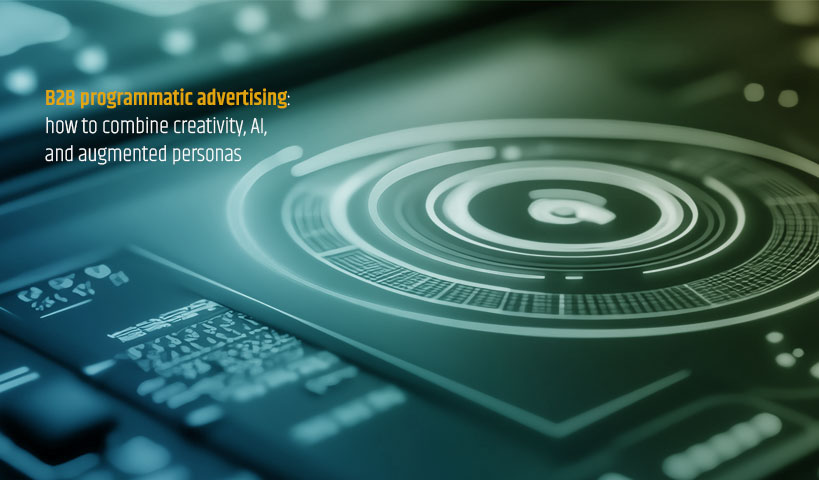
In B2B content marketing, understanding our different users is essential to creating content that is effective and converts. Let’s take the example of a growing company looking for a new customer relationship management (CRM) system. Three decision-makers embodying distinct users will interact with content in this fictitious case study.
There are many types of user, but three stand out and have often attracted the attention of marketers. We call them skimmers, swimmers and divers. So let’s find out together, how to adapt a B2B content marketing strategy to meet the unique needs of these liquid content-loving users. 😊
Sarah the skimmer: the marketing director in a hurry
Sarah, a marketing director, perfectly embodies the skimmer type of user. Always in a hurry, she skims over information in search of highlights. One morning, while quickly scanning her e-mails and LinkedIn feed, she came across your post: “Five signs it’s time to change CRM”.
Like a true skimmer, Sarah sweeps her eyes across the screen, stopping only at the catchy headlines and colorful infographics. She reads only the first few lines of each paragraph, trying to grasp the essentials in record time. Key points, highlighted in boxes, capture her attention. In less than two minutes, she has a general idea of the content and decides to tell her team.
To satisfy sufers like Sarah, your content needs to be concise and visually compelling. Informative headlines, bullet points, infographics and summaries at the beginning of articles are essential. Each element must deliver a key piece of information, allowing quick comprehension even without extensive reading.
Content structure plays a crucial role for surfers like her. This means adopting an “inverted pyramid” approach, placing the most important information at the top of the page. A bit like journalism with the “lead”. You should also use descriptive subheadings and compelling catchphrases for each section. In Sarah’s case, this allows her to quickly grasp the essentials, even if she only reads the beginning of each section.
Don’t forget the importance of design in a strategy aimed at surfers. Use contrast, color and white space to guide the eye to key elements. It’s also important to ensure that content is easily scannable on all devices, especially mobile, where surfers like Sarah are likely to view it on the go.
Thomas the swimmer: the methodical IT VP
Intrigued by Sarah’s suggestion, IT VP Thomas embodies the swimmer-type reader. He swims through the information, alternating between in-depth passages and quick overviews. He discovers your white paper “A complete guide to choosing the right CRM for your growing business”.
As a swimmer, Thomas starts by skimming the table of contents, getting an idea of the document’s structure. He then dives into the sections of particular interest to him, carefully reading the paragraphs on technical features. For other sections, such as customer testimonials, he simply skims over them.
Thomas particularly appreciates the graphic comparing features, taking time to evaluate each option. He takes notes, marks pages, and uses hyperlinks to expand on certain points when necessary.
To captivate swimmers like Thomas, your content needs to be well structured, with clear navigation. Summaries at the beginning of each section, internal and external links, and a mix of in-depth technical content and more general information allow them to modulate their reading according to their needs.
Emma the diver: the CEO in search of strategic vision
Convinced by Thomas’ analysis, Emma, the company’s CEO, represents a diver. She dives deep into the content, seeking to understand all aspects of a subject. Emma discovers your podcast series “The future of CRM: trends and innovations”.
She listens to each episode with rapt attention, taking detailed notes. She’s not content with surface information, but seeks to understand the long-term implications of each point discussed. Emma particularly enjoys the discussions on artificial intelligence in CRM and its impact on customer satisfaction.
After listening to the podcast series, Emma does further research, reads the transcripts, and explores the additional resources mentioned. She thinks long and hard about how these innovations might fit into her company’s overall strategy.
To satisfy diver-type users like Emma, your content needs to be rich, in-depth and interconnected. Detailed analysis, in-depth case studies, and links to additional resources are essential. Don’t be afraid to tackle complex concepts and provide varied perspectives on the subject.
Creating a complete B2B content ecosystem for users
The whole point of B2B content marketing lies in your ability to create an ecosystem of information that guides Sarah the surfer, Thomas the swimmer and Emma the diver through their decision-making journey. It’s like orchestrating a symphony, with each instrument playing its part at just the right moment.
Your short, compelling content attracts the attention of surfers who frequent the TOFU (Top Of Funnel). Structured, detailed resources satisfy swimmers exploring the MOFU (Middle Of Funnel). Your in-depth analyses and strategic perspectives provide food for thought for divers exploring the abysses of the BOFU (Bottom Of Funnel).
Don’t forget that in the often long and complex B2B sales cycle, your readers can change their behavior. Sarah may become a swimmer on a second, more attentive reading. Thomas the swimmer might turn into a diver on certain crucial technical aspects.
By creating content that adapts to these different reading modes, we effectively support the entire B2B decision-making process. Whether readers skim the surface, navigate the middle currents or dive into the depths, they should all emerge from our content with valuable insights for their business.
This is how we can turn users into loyal customers and brand ambassadors, speaking to each individual while addressing the overall needs of the client company.
Conclusion
So, what do you think? Ready to tailor your B2B content to captivate all your readers, from skimmers to divers? Our content marketing experts are here to help you create a tailor-made strategy that speaks to every decision-maker, whatever their reading style. Contact us today to find out how you can transform your content into a powerful conversion tool, perfectly aligned with your potential customers’ decision paths.




